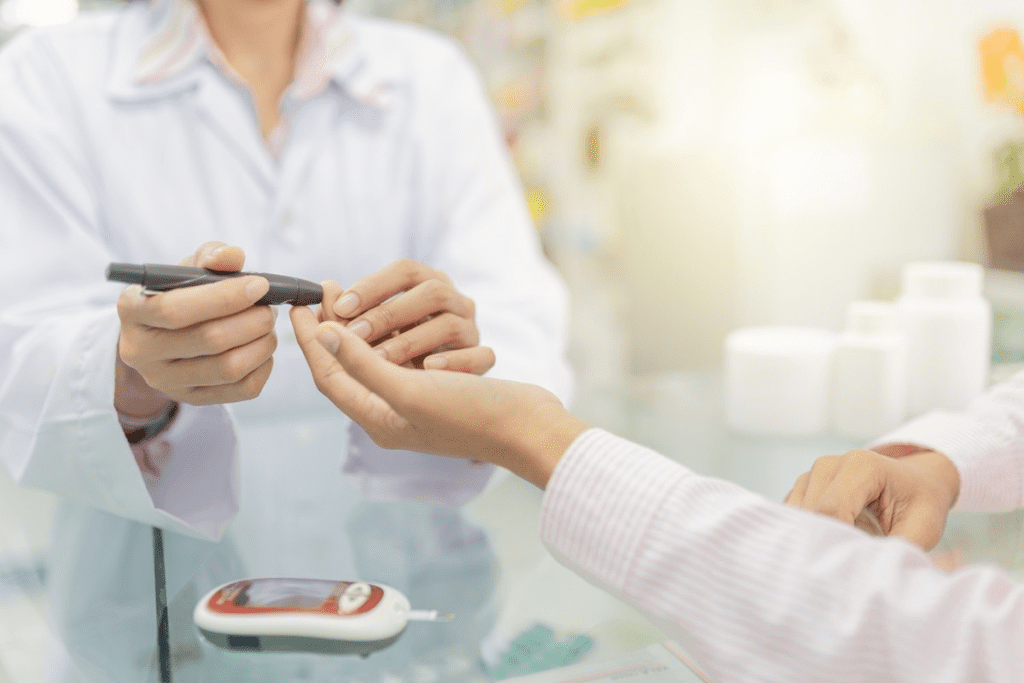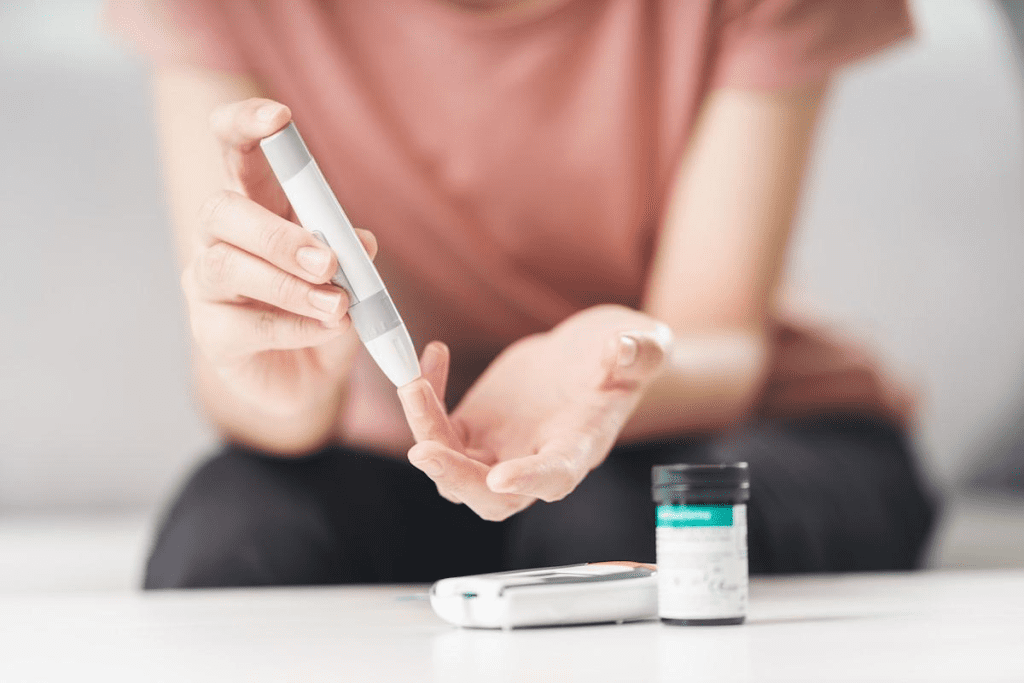Last Updated on November 14, 2025 by
Frequent urination in kids worries parents a lot. It’s a key sign of type 1 diabetes. This is when the pancreas stops making insulin, a hormone that controls blood sugar.
Seeing a child go to the bathroom a lot can be scary. Symptoms like bed wetting and heavy nappies in babies might mean something’s wrong. A study found that 21.5% of kids with type 1 diabetes have bladder and bowel issues.

It’s important to know how diabetes in children and frequent urination are linked. Knowing the signs of diabetes in kids helps catch it early. This can lead to better care and outcomes.Frequent urination is among key type 1 diabetes symptoms in kids. Learn other warning signs to detect diabetes early.
Frequent urination is a common symptom in children with diabetes. Recognizing this symptom can help parents seek medical help early. We will look at how diabetes and frequent urination are linked in kids, focusing on how common this symptom is in diabetic children.

About 41.4% of diabetes patients, including kids, may urinate more than usual. This is a big deal for kids, as it can be a sign of type 1 diabetes. Knowing about this symptom can help parents spot early signs of juvenile diabetes.
Parents should watch their child’s bathroom habits closely. Changes in how often or how much they urinate can mean health issues. Keeping an eye on these habits can help catch diabetes early. It’s key to know the symptoms of type 1 diabetes, like frequent urination, to get medical help fast.
The kidneys help filter blood and get rid of bad stuff. When they find high blood sugar, they try to get rid of it through urine. This is why kids with type 1 diabetes often pee a lot. Knowing the difference between normal and diabetes-related urination is key to spotting health problems.
Understanding the link between diabetes and frequent urination helps parents spot type 1 diabetes signs in their kids. This knowledge can lead to quicker diagnosis and better care for the condition.
Excessive urination in children with type 1 diabetes puzzles parents. But knowing why it happens can help. We’ll look at what causes it, helping parents understand type 1 diabetes symptoms in kids.
In type 1 diabetes, the pancreas can’t make insulin. This hormone is key for cells to take in glucose. Without it, glucose builds up in the blood, causing high sugar levels.
The kidneys then work harder to get rid of this extra glucose. This makes more urine. This is the body’s way of getting rid of extra glucose, causing frequent urination.
Carbohydrates turn into glucose when we eat. In healthy people, insulin helps glucose get into cells. But in kids with type 1 diabetes, insulin is missing. This means glucose stays in the blood, raising sugar levels.

Glucosuria is when glucose is in the urine, a sign of diabetes. When blood sugar gets too high, the kidneys can’t take it all back. This means glucose ends up in the urine.
Having glucose in the urine shows poor blood sugar control. It also leads to frequent urination. Trying to get rid of extra glucose through urine can cause dehydration. So, knowing about glucosuria is key to managing type 1 diabetes in kids.
The kidneys are vital in managing glucose levels. In type 1 diabetes, they work hard to filter out extra glucose. This extra effort leads to more urine.
Parents need to know that the kidneys’ hard work is a sign of a bigger problem. It shows the body can’t control blood sugar levels. Treating this condition means addressing the high blood sugar and not just the symptom of frequent urination.
Children with Type 1 Diabetes may show many symptoms, including frequent urination. It’s important to spot these signs early. This helps parents and caregivers get medical help fast.
Increased thirst is a big sign. The body loses fluids and wants more water. This creates a cycle. Kids also get hungrier because their bodies can’t use glucose well.
Increased thirst and hunger are key indicators that something might be amiss, especially when observed alongside frequent urination.
Even though kids might eat more, they can lose weight. This happens because their body uses fat and muscle for energy. It’s a big warning sign for parents.
Kids with Type 1 Diabetes often feel tired or irritable. High blood sugar and trouble using glucose for energy make them feel weak. The stress of the condition also makes them irritable.
Nighttime urination, or nocturia, is a big warning sign. It means a child might have trouble with blood sugar. Parents should watch for this and talk to a doctor.
Knowing these symptoms helps parents and caregivers spot Type 1 Diabetes early. This ensures kids get the help they need quickly.
Frequent urination can really change a child’s life. It can mess with their school work and how they interact with others. Kids with type 1 diabetes often deal with this problem, making it tough for them and their families.
Kids with juvenile diabetes might struggle in school because they have to go to the bathroom a lot. They might miss out on lessons or fun activities. It also makes it hard for them to join in sports or social events because they need to take breaks.
Managing their diabetes can make them feel like they don’t fit in. This can hurt their self-esteem and how they connect with others.
Always needing to go to the bathroom can be stressful and embarrassing for kids. It might make them feel anxious or sad. The emotional strain of dealing with signs of childhood diabetes can really affect their happiness and life quality.
Parents should know when their child’s symptoms are getting too much. If frequent urination is causing big problems or if the child seems really upset, it’s time to see a doctor. Doctors can change the treatment plan to help manage the symptoms better.
Families are key in supporting kids with type 1 diabetes. By learning about the condition, parents can help their child handle it better. This means creating a supportive home, helping with school, and talking openly about their needs and feelings.
Working with doctors, families can find ways to lessen the impact of frequent urination. This way, kids can live happy and active lives, even with their condition.
We’ve looked at how type 1 diabetes symptoms, like frequent urination, affect kids every day. It’s key to understand these signs to manage diabetes well.
Handling type 1 diabetes means keeping an eye on blood sugar, giving insulin, and changing lifestyle habits. Spotting diabetes symptoms helps parents support their kids better. They can work with doctors to create a care plan that fits their child.
Places like Livhospital.com focus on preventing and treating diabetes with care and ethics. By being proactive, families can help their kids stay healthy and active. This reduces the effects of symptoms like needing to pee a lot.
Managing symptoms like needing to pee a lot is vital for kids with diabetes. We urge parents to stay updated and team up with doctors. This way, they can get the best care for their child.
Signs include frequent urination, increased thirst and hunger, unexplained weight loss, and fatigue. It’s important to spot these symptoms early for timely medical help.
High blood sugar levels cause glucose to spill into the urine. This makes the kidneys produce more urine, leading to frequent urination.
Glucosuria is glucose in the urine, often linked to diabetes. High blood sugar levels mean the kidneys can’t reabsorb all glucose, leading to its presence in urine.
Nighttime urination, or nocturia, is a sign of high blood sugar levels. It can disrupt sleep and is a symptom that needs investigation.
Families can help by monitoring their child’s condition, adjusting diet and insulin as needed, and providing emotional support. This helps manage diabetes’s challenges.
Seek medical help if your child has persistent or severe symptoms of frequent urination. Look for other signs like increased thirst, weight loss, or fatigue.
Yes, untreated type 1 diabetes can cause serious complications, like diabetic ketoacidosis. This is a potentially life-threatening condition. Quick medical attention is key to preventing damage.
Knowing the symptoms helps parents and caregivers provide timely care. They can adjust treatment plans to better manage the condition and improve the child’s life.
Subscribe to our e-newsletter to stay informed about the latest innovations in the world of health and exclusive offers!